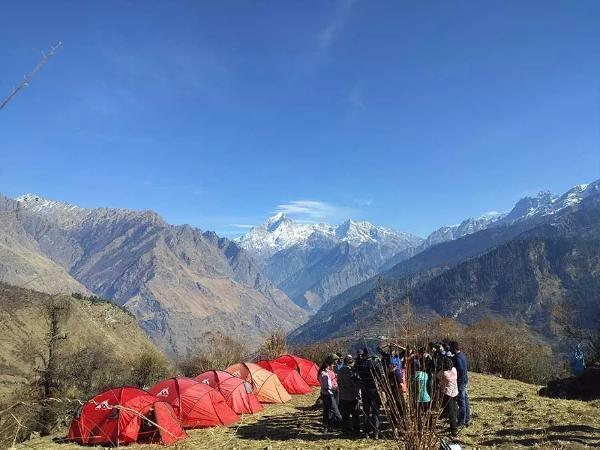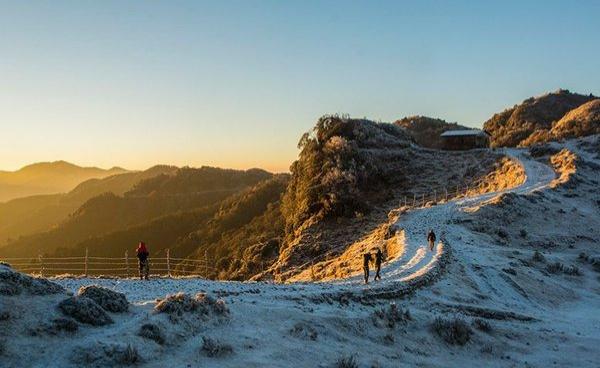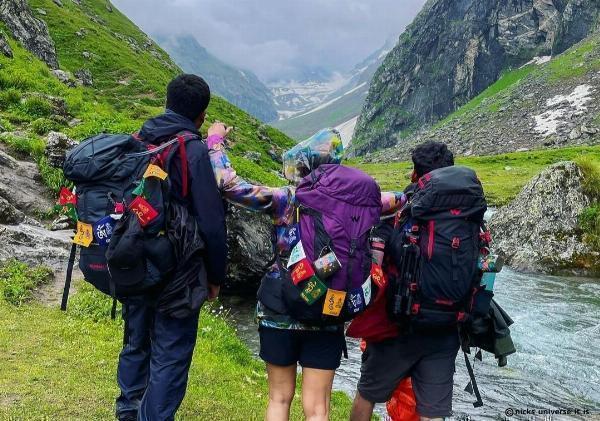 DA 70+ Guest Post Placements – Elite Authority at Your Fingertips!
DA 70+ Guest Post Placements – Elite Authority at Your Fingertips!
Exploring the Enchantment of the Valley of Flowers Trek
Written by satish » Updated on: June 17th, 2025

Nestled in the lap of the Western Himalayas, the Valley of Flowers in Uttarakhand is a world-renowned trek that offers a surreal experience of nature's vibrant palette. Declared a UNESCO World Heritage Site, this valley is famed for its diverse flora, captivating landscapes, and breathtaking views. The Valley of Flowers Uttarakhand trek is not just an adventure; it's a journey into a land of dreams, where every step reveals a new hue and every breath fills you with the fragrance of exotic flowers.
A Trek Into Paradise
The Valley of Flowers Uttarakhand trek begins from Govindghat, a small town located at the confluence of the Alaknanda and Lakshman Ganga rivers. From Govindghat, the trek leads to Ghangaria, which serves as the base camp for the valley. This 13-kilometer trek is filled with scenic beauty, as you cross lush green landscapes, bubbling streams, and charming wooden bridges. Ghangaria, located at an altitude of 3,050 meters, is a picturesque hamlet that offers basic accommodation and food options for trekkers.
The Blooming Valley
From Ghangaria, a 4-kilometer trek takes you to the entrance of the Valley of Flowers. As you step into the valley, you are greeted by an explosion of colors. The valley, spread over an area of 87.5 square kilometers, is home to over 500 species of wildflowers, including the rare and exotic blue poppy, Brahma Kamal, and Cobra Lily. The sight of these flowers swaying in the gentle mountain breeze against the backdrop of snow-clad peaks is truly mesmerizing.
The best time to visit the Valley of Flowers is from July to September, when the valley is in full bloom. The monsoon rains bring the flowers to life, creating a carpet of colors that is a feast for the eyes. The trek during this period is relatively challenging due to the slippery paths and unpredictable weather, but the reward is worth every effort.
Flora and Fauna
Apart from the flowers, the valley is also rich in biodiversity. It is part of the Nanda Devi Biosphere Reserve and is home to several rare and endangered species of animals, such as the Asiatic black bear, snow leopard, musk deer, and blue sheep. Bird watchers will also find the valley fascinating, with species like the Himalayan monal, snow partridge, and Himalayan vulture making it their home.
The Spiritual Connect
For many trekkers, the journey to the Valley of Flowers Uttarakhand trek is also a spiritual experience. The serene environment, the majestic mountains, and the vibrant flora create a sense of tranquility that is hard to find elsewhere. The trek also takes you close to Hemkund Sahib, a revered Sikh pilgrimage site located at an altitude of 4,329 meters. Hemkund Sahib, surrounded by seven snow-capped peaks, is believed to be the place where Guru Gobind Singh, the tenth Sikh Guru, meditated in his previous life. The crystal-clear glacial lake at Hemkund reflects the surrounding mountains, creating a sight that is both serene and awe-inspiring.
Preparation and Essentials
While the Valley of Flowers Uttarakhand trek is moderately challenging, proper preparation is essential to ensure a safe and enjoyable experience. Here are some tips and essentials for trekkers:
Fitness: Make sure you are physically fit and can handle long walks and steep ascents. Regular exercise and cardiovascular training will help prepare your body for the trek.
Clothing: The weather in the mountains can be unpredictable, so pack layered clothing. Carry a waterproof jacket, thermal wear, and quick-dry clothes. A sturdy pair of trekking shoes with good grip is a must.
Gear: A good quality backpack, trekking poles, and a rain cover are essential. Don’t forget to carry a first-aid kit, water bottles, and energy bars.
Permits: Trekkers need to obtain permits to enter the Valley of Flowers National Park. These can be obtained from the Forest Department office at the entrance of the park.
Accommodation: Basic accommodation is available at Ghangaria, but it is advisable to book in advance during the peak season. Camping is not allowed inside the valley, so plan your stay accordingly.
Responsible Trekking
As you embark on the Valley of Flowers Uttarakhand trek, it is crucial to practice responsible trekking to preserve the pristine beauty of the valley. Here are some tips to minimize your impact on the environment:
Leave No Trace: Carry all your waste back with you and dispose of it properly. Avoid using plastic and opt for reusable items.
Stay on the Trail: Stick to the marked trails to avoid damaging the delicate flora. Off-trail walking can harm the plants and disturb the wildlife.
Respect the Wildlife: Maintain a safe distance from animals and birds. Do not feed or disturb them in any way.
Water Sources: Avoid contaminating the water sources. Use biodegradable soap and dispose of waste water away from streams and rivers.
The Journey Back
The return journey from the Valley of Flowers is as beautiful as the trek itself. As you retrace your steps back to Ghangaria and then to Govindghat, take a moment to reflect on the enchanting experience. The memories of the vibrant flowers, the majestic mountains, and the serene landscapes will stay with you long after you leave the valley.
Conclusion
The Valley of Flowers Uttarakhand trek is a once-in-a-lifetime experience that offers a perfect blend of adventure, natural beauty, and spiritual tranquility. It is a journey that takes you into the heart of nature, where every step reveals a new wonder and every moment is filled with awe. Whether you are a seasoned trekker or a nature enthusiast, the Valley of Flowers will leave you spellbound with its sheer beauty and serenity. So pack your bags, put on your trekking shoes, and get ready to embark on an unforgettable adventure in the Valley of Flowers.
Note: IndiBlogHub features both user-submitted and editorial content. We do not verify third-party contributions. Read our Disclaimer and Privacy Policyfor details.
Copyright © 2019-2025 IndiBlogHub.com. All rights reserved. Hosted on DigitalOcean for fast, reliable performance.












